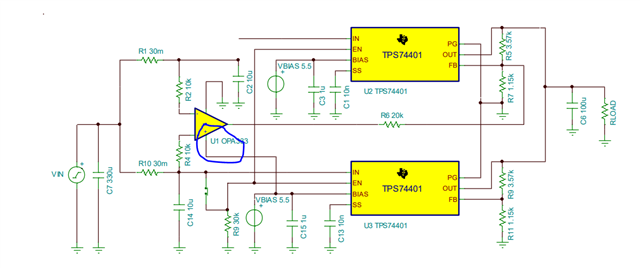Other Parts Discussed in Thread: TIDA-01232, TPS7A57, TPS7A94, OPA333
I am designing a 5V – 1.8A power rail with the TPS7A52. The output noise needs to be as low as possible and the transient response as fast as possible.
The input voltage is of the rail is 6.10V, so to keep the power dissipation of the IC around 1W I am going to use a rectifier that has a drop of 500mV @ 2A.
The IC is equipped with a bias voltage input. For the bias voltage input I can use the 6.1V input voltage.
Two questions: Does it make sense to use the 6.1V at the bias input and second what type of capacitor is the best option for the bias supply, a tantalum or ceramic cap or a combination of both?
I am looking forward to you advise.



